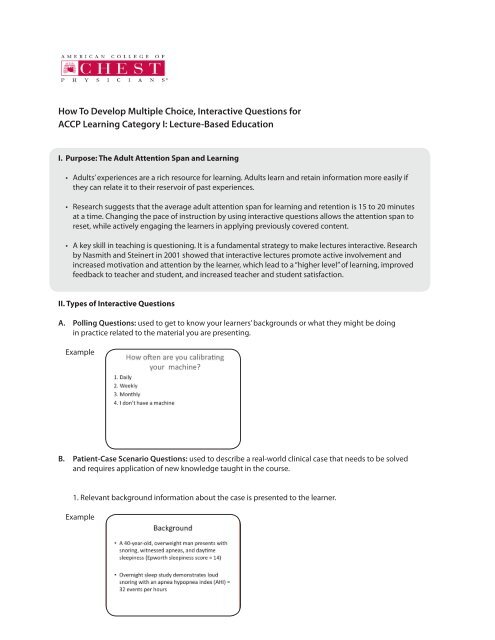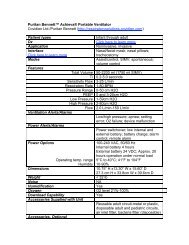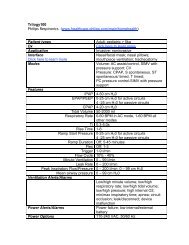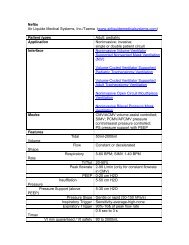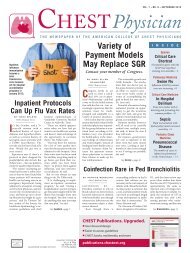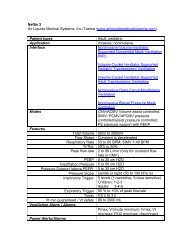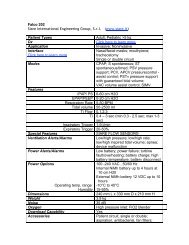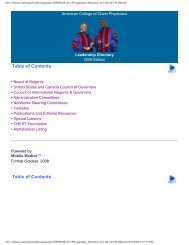How To Develop Multiple Choice, Interactive Questions for ACCP ...
How To Develop Multiple Choice, Interactive Questions for ACCP ...
How To Develop Multiple Choice, Interactive Questions for ACCP ...
Create successful ePaper yourself
Turn your PDF publications into a flip-book with our unique Google optimized e-Paper software.
<strong>How</strong> <strong>To</strong> <strong>Develop</strong> <strong>Multiple</strong> <strong>Choice</strong>, <strong>Interactive</strong> <strong>Questions</strong> <strong>for</strong><strong>ACCP</strong> Learning Category I: Lecture-Based EducationI. Purpose: The Adult Attention Span and Learning• Adults’ experiences are a rich resource <strong>for</strong> learning. Adults learn and retain in<strong>for</strong>mation more easily ifthey can relate it to their reservoir of past experiences.• Research suggests that the average adult attention span <strong>for</strong> learning and retention is 15 to 20 minutesat a time. Changing the pace of instruction by using interactive questions allows the attention span toreset, while actively engaging the learners in applying previously covered content.• A key skill in teaching is questioning. It is a fundamental strategy to make lectures interactive. Researchby Nasmith and Steinert in 2001 showed that interactive lectures promote active involvement andincreased motivation and attention by the learner, which lead to a “higher level” of learning, improvedfeedback to teacher and student, and increased teacher and student satisfaction.II. Types of <strong>Interactive</strong> <strong>Questions</strong>A. Polling <strong>Questions</strong>: used to get to know your learners’ backgrounds or what they might be doingin practice related to the material you are presenting.ExampleB. Patient-Case Scenario <strong>Questions</strong>: used to describe a real-world clinical case that needs to be solvedand requires application of new knowledge taught in the course.1. Relevant background in<strong>for</strong>mation about the case is presented to the learner.Example
<strong>How</strong> <strong>To</strong> <strong>Develop</strong> <strong>Multiple</strong> <strong>Choice</strong>, <strong>Interactive</strong> <strong>Questions</strong> <strong>for</strong><strong>ACCP</strong> Learning Category I: Lecture-Based Education2. The learners provide their feedback through a multiple choice question or series of questions.Example3. The expert presenter discusses the correct answers and rationales.ExampleIII. Formatting Requirements• <strong>Interactive</strong> questions should be created in Microsoft PowerPoint on a plain white background.• Within the slide layout, type the actual question into the title box at the top and the answer choices inthe body of the slide. Your answer choices should be numbered (1, 2, 3,) in sequential order.• If including a reference, list them in AMA <strong>for</strong>mat at the bottom of the slide.IV. References and ResourcesKnowles M. The Adult Learner, The Neglected Species. Houston, TX: Gulf Publishing Co; 1990.Gauci SA, Dantas AM, Williams DA, Kemm RE. Promoting student-centered active learning in lectures with a personal response system.Adv Physiol Educ. 2007;33:60-71.Middendorf J, Kalish A. The “Change-Up in Lectures. Vol 5. No 2. The National Teaching and Learning Forum Indianolis, IN; 1996.Nasmith L, Steinert Y. The evaluation of a workshop to promote interactive lecturing. Teach Learn Med 2001;13(1)43-48.Zemke R, Zemke S. Adult Learning: What Do We Know <strong>for</strong> Sure? Training 1995; June, 31-40.


